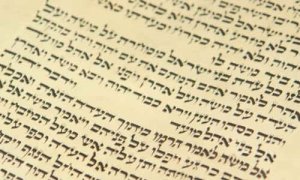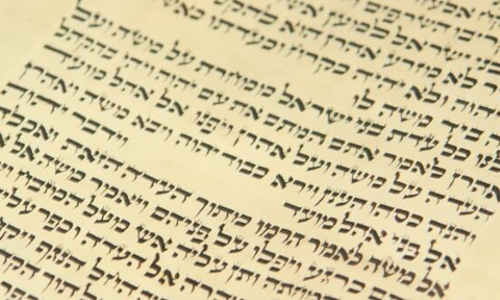
Note: The Shabbos Torah Reading is divided into 7 sections. Each section is called an Aliya [literally: Go up] since for each Aliya, one person “goes up” to make a bracha [blessing] on the Torah Reading.
It’s the 7th day of Adar, 2488, the last day of Moshe’s life. Exactly 120 years earlier the world was graced with the birth of a child who brought redemption to his people and the light of Torah to the world. He became a prophet of unparalleled greatness who led his nation through a miraculous 40 year journey to the edge of the promised land.
Trials and tribulations, rebellions and conspiracies, disillusionment and questions were his lot in life. Yet, Moshe never gave up. He nurtured the Jews “like a mother cares for her child”. He confronted man and G-d in protecting his charges, and succeeded in bringing the people, both physically and spiritually intact, to the fulfillment of a 500 year old promise. Now he had to put his affairs in order, finish his work, and insure an unquestioned transition of leadership to his student Yehoshua. This is the focus of Parshas Vayelech.
1st & 2nd Aliyot: Moshe emphasized Hashem’s continued presence and protection, even though, Moshe himself would not be with them any longer. Ever since assuming the leadership of Israel, Moshe had the conflicting job of fostering the nations dependency upon Hashem while de-emphasizing their dependency upon him as a leader and provider. Now, as he prepared his final good-bye, it was clear that by day’s end, with Moshe’s death, the nation would have no other choice but to reassess their dependency on Moshe and direct their attention to Hashem.
However this was far more complex than it seemed. True, Moshe’s death would be a definitive “cutting of the apron strings”; but, living in the Land by the laws of nature rather than miracles would de-emphasize G-d’s overt role in all aspects of their lives.
3rd & 4th Aliyot: By writing the entire text of the Torah, entrusting it into the care of the Kohanim, and explaining the unique mitzvah of Hakhel, Moshe hoped that the people would retain the perspective of their dependency upon Hashem. The Kohanim represented the continued presence of “G-d in the midst of the camp”. As teachers and role models, they kept an otherwise dispersed and decentralized nation focused on their national and individual missions.
Once every 7 years, the entire nation gathered in the Bais Hamikdash in a recreation of the giving of the Torah. This national expression of devotion would serve as an essential reminder that adherence to the Torah is the reason why the nation occupied and retained the Land.
5th, 6th & 7th Aliyot: Moshe and Yehoshua were summoned to the Ohel Moed and told the harsh future of their charges. In spite of all the warnings, the people would sin and loose sight of their dependency upon Hashem. They would be punished, and instead of accepting responsibility for the consequences that their neglect of G-d’s commandments caused, they would have the chutzpah to blame G-d’s absence and neglect for the calamities and disasters that had befallen them.(31:17) It would then be the very words of this “Song” which would testify to the reality of their defection from Hashem and the inevitable consequences which occurred, as forewarned in this Torah.
Yehoshua was encouraged to be strong and courageous and lead the nation with the same devotion that Moshe had displayed. The Torah, written by Moshe himself, was then placed in the Ark as proof of the conditions by which the Jewish people would live or die.


